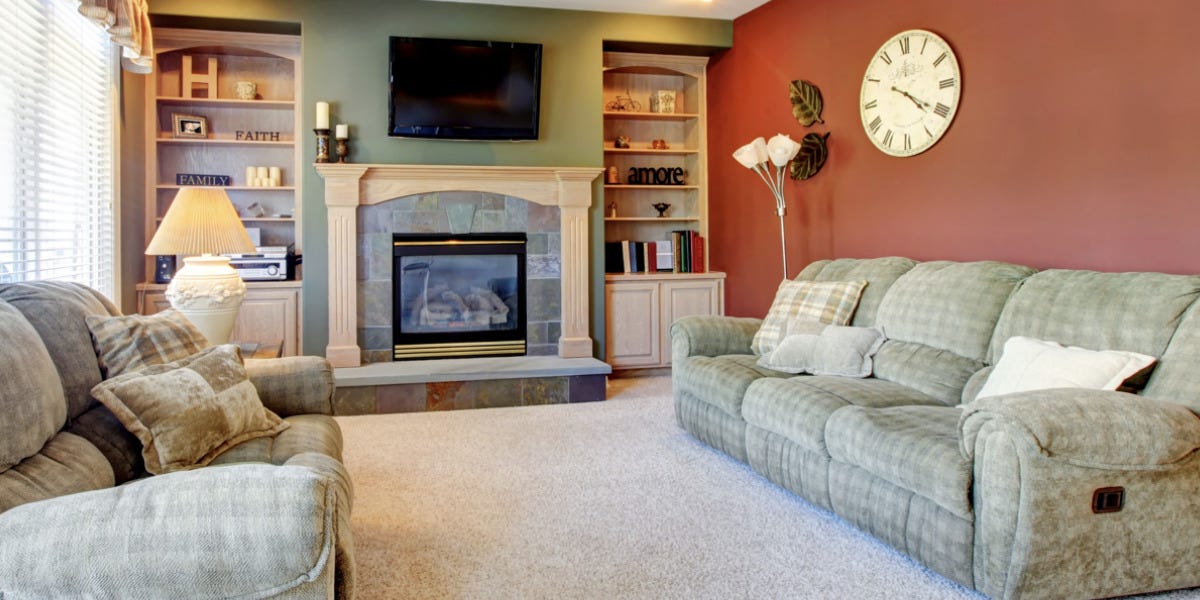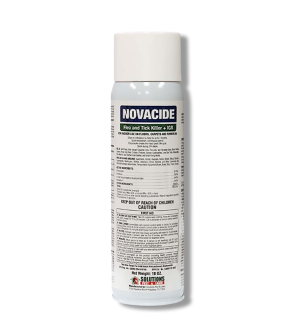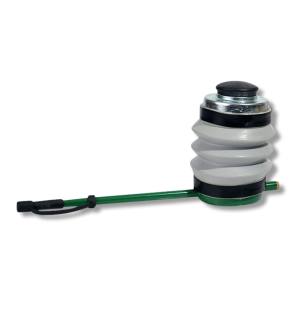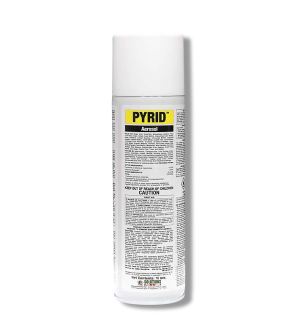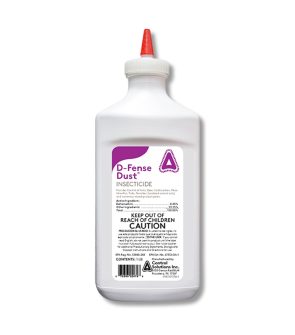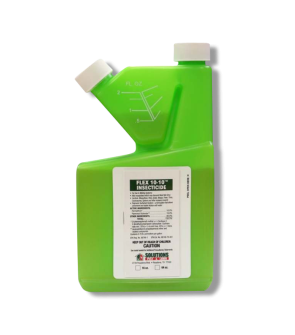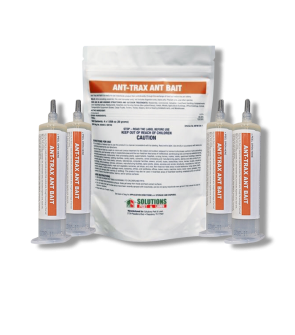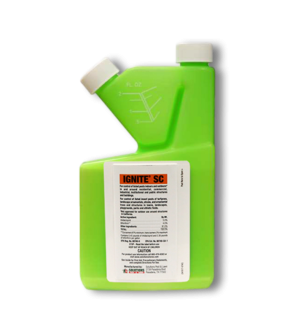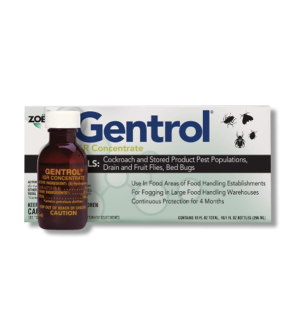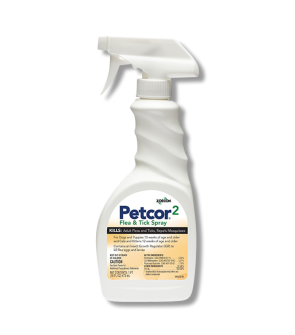Insects in Living & Dining Room
Most Effective Products
Common Insects in Living & Dining Rooms
When we think about possible bug infestations in our homes, we typically assume dusty corners of unused rooms, the basement, or attic are where pests are hiding. However, frequently used areas such as living rooms and dining rooms can experience bug activities.
A number of different pests may be found in living and dining rooms, but the most common ones are ants, bed bugs, carpet beetles, dust mites, fleas, and house flies. Once they have made their way into these areas there are a number of issues that can rise with each pest species.
While some of these bugs are harmless, some can carry diseases or allergic reactions. It’s important to know what kind of bugs you might be dealing with in your living room or dining room and how to prevent them from coming into these spaces in the first place with this DIY guide.
If you do not see a pest listed here, then contact our customer service team by phone or email for professional tips and product recommendations.
Ants
Depending on the ant, not all will physically damage your home, but they do reduce the pleasure of using living and dining rooms. Ants most likely to enter your living and dining rooms are argentine ants and odorous house ants.
Ants never live alone. They have a tight social structure, and all of them live in large colonies leading to better chances of biting, stinging, or spoilage of food.
Identification

For a better visual aid look at the image above: On the left is the argentine ant and on the right is the odorous house ant.
Argentine ants are small at 2-3 mm long and light to dark brown in color. The queen ant will measure between 1/6 to 1/4 inches. They bear no stinger, but will bite if provoked.
Odorous house ants are tiny brown to black colored ants that release a foul rotten coconut smell when crushed or threatened. Its waist is segmented and has a single node to the petiole, which is hidden by abdomen.
Inspection

Argentine ants will nest behind walls, in wall voids, under floors, and around moist areas like pipes, sinks, and potted plants in living and dining rooms.
Odorous house ants create their nests in wall crevices, under carpet, under floors and behind paneling, and inside of walls of living and dining rooms.
Treatment
Step 1: Clean Up Food and Water
 Make an effort to contain the food sources by vacuuming up messes under and on top furniture, floors, corners of rooms, and any other surface that you set these items on.
Make an effort to contain the food sources by vacuuming up messes under and on top furniture, floors, corners of rooms, and any other surface that you set these items on.
Dry up moisture by wiping it off with a towel or addressing the source of the water leakage by making the necessary repairs to that object. Leave ceiling fans on to keep the air moving, helping to keep excessive moisture away.
Keep your pets food and other food left out on the coffee table, dining room table, or counters stored in an airtight plastic container. Regularly clean pet food bowls to limit food attractants.
Leave the lids on trash cans and take them out on a regular basis. Move outdoor trash cans away from your home's foundation.
Step 2: Use Baits
 A powerful solution against ants in living and dining rooms is a bait insecticide. Ant-Trax Ant Bait is a versatile ant bait gel that kills ants both indoor and outdoors.
A powerful solution against ants in living and dining rooms is a bait insecticide. Ant-Trax Ant Bait is a versatile ant bait gel that kills ants both indoor and outdoors.
Determine how much Ant-Trax Ant Bait to use by measuring the square footage of the treatment area. To do this, measure the length and width of the treatment area in feet then multiply them together (length X width = square footage).
Apply 4 drops of Ant-Trax Ant Bait or 0.006 oz. per square yard of treatment area.
Place the product close to foraging ant trails and areas of activities, but not in areas that are easily accessible to children and pets.
This could be along baseboards, under countertops, and in the cracks and crevices of walls and other voids.
Do not apply this product to areas that are routinely washed such as the cracks and crevices in tops of tables and surfaces that food is held or prepared on.
Step 3: Seal Entry Points

Caulk and seal all entry points both indoors and outdoors.
These openings could be cracks, crevices, or gaps around window and door frames, baseboards, foundation walls, floors, ceiling, and around plumbing penetrations.
Proper weather-stripping and thresholds around window and door frames can reduce moisture as well as limit ants from coming inside.
Bed Bugs
While bed bugs are not known to carry any diseases, their presence quickly decreases the attractiveness and livability of any living and dining room.
These blood-dependent pests change their hiding places regularly, and can hide in any openings as thin as a credit card, making them difficult to control.
Identification

These pests are also wingless, but have six legs they use to grip onto surfaces or fabrics to travel from place to place.
Inspection

Treatment
Step 1: Preliminary Cleaning

By moving furniture and other objects outside or to the trash you are only spreading the infestation further into your home.
You will need to clean the living room and dining room by first vacuuming to remove a majority of the bed bugs. A vacuum with a canister or bagging device would be more useful.
We recommend using a crevice attachment with your vacuum to reach the folds and seams of furniture, floors, and curtains.
Wash and dry on high heat all of the fabrics such as pillow cases, linens, blankets kept on furniture, carpets, and rugs kept in the living and dining room.
Steam cleaning other surfaces that cannot be washed like lampshades or furniture should be done.
Step 2: Apply Flex 10-10 and Gentrol IGR
To save furniture from bed bugs, we recommend using Flex 10-10 and Gentrol IGR.
Flex 10-10 is an effective synthetic pyrethroid concentrate that will completely kill bed bugs without damaging most furniture if applied according to the product label instructions.
Gentrol IGR is an insect growth regulator that prevents undeveloped bed bugs, eggs, and nympths from growing into reproducing adults.
To use either of these products, you will need to use a handheld pump sprayer for precise applications.
Before mixing with Gentrol IGR, you will need to treat your furniture and linens only with Flex 10-10.
This must be followed as Gentrol IGR cannot be used on linens, but may be used in combination with Flex 10-10 on the cracks and crevices of furniture, carpet, flooring, and along the baseboards of the room.
Before treating, spray fabric in an inconspicuous area to check for staining or discoloration. Inspect again after drying. If no-staining occurs, then you can lightly spray this product.
For standard or light bed bugs infestations, use 3.2 fl. oz. of Flex 10-10 in a gallon of water per 1,000 sq. ft. For severe bed bug infestations, you may use 6.4 fl. oz. of product per gallon per 1,000 sq. ft.
After treating furniture and linens with Flex 10-10, you may then apply at a rate of 1 fl. oz. of Gentrol IGR per 1,500 sq. ft. of surface area.
We also recommend making additional applications to the baseboards in the room to further control bed bugs.
Step 3: Flush Bed Bugs Out

Pyrid Insecticide Aerosol is a ready to spray botanical insecticide that provides a fast knockdown of bed bugs upon contact and those in cracks and crevices.
This product can be used on the tufts, seams, folds, edges, and underneath of furniture in living and dining rooms. Do not spray to flat surfaces where people can contact it.
Apply as a crack and crevice treatment to all baseboards, moldings, beneath floor coverings and carpet, closets, shelves, curtains, furniture, and picture frames in living and dining rooms.
Reapply this product every 7 to 10 days or as needed until infestation is eliminated.
Step 4: Treat Voids

D-Fense Dust Insecticide is a superior bed bug control solution that can eliminate these pests and more in wall voids and behind wall outlets. To apply this product, you will need to use a handheld duster.
Turn off the breaker to electrical outlets then remove the cover. Squeeze the duster until a thorough coat of powder is released to upholstery of chairs and sofas, picture frame moldings, and all cracks and crevices in the room are treated.
Allow powder to remain in contact with folds and tufts of mattresses, chair and sofa upholstery for 4-6 hours, then thoroughly vacuum these treated areas.
Dispose of the vacuum bag outside then completely clean the vacuum after use.
Carpet Beetles
Carpet beetles are not directly harmful to a person's health, they are a real menace in their larvae stages though. Reason being is that the larvae eat a wide variety of animal and plant-based products, both manufactured and naturally occurring.
Since they feed on various items, including carpeting, clothing, and furniture your living room and dining room belongings are in danger.
Identification
Carpet beetles are oval-shaped insects that are brown in coloration with several irregular patterns of white, brown, black, yellow, or green. It is a small beetle ranging from 5 to 8 mm in size.
Inspection

Treatment
Step 1: Vacuum
Regularly vacuuming is one of the most efficient ways to control carpet beetles.
Vacuum all carpets, rugs, furniture, and areas where this pest was active. This will not only help to pick up carpet beetles, but additional food they can feed on like hairs and dead skin.
Use the crevice tool of your vacuum to any upholstered furniture to reach them in hard to reach areas.
Additionally, wipe off the surfaces of furniture and objects in these spaces with warm water.
Step 2: Use Flex 10-10

For mild carpet beetle infestations indoors, use 3.2 fl. oz. of Flex 10-10 per gallon of water in a handheld pump sprayer. For more severe infestations, apply 6.4 fl. oz. of product per gallon of water.
Adjust the sprayer to a fan-tip setting then spray edges of carpeting and under carpeting and rugs. Spray directly into the cracks of closets and shelving of furniture and along baseboards.
Do not use treated articles until spray has dried.
Fleas
If you have pets then there’s no question they spend a lot of time outdoors. Whether it’s just sitting in your yard or you walking across areas where other pets have traveled you are bound to carry fleas.
Among their annoying activities on pets they can also bite you and lay numerous eggs that do not hatch for 9 months, making them a serious concern for enjoying living and dining room spaces.
Identification
Fleas are dark to reddish brown in color, and can measure 1/16 to ⅙ of an inch in size. These pests have vertical flat shaped bodies, wingless, and have six legs that makes them capable of jumping host to host.
Inspection
Fleas tend to hide in the cracks and crevices of furniture, floors, baseboards, pet bedding, and underneath furniture or pet resting areas in living and dining rooms.
If you have pets then they like to hide on their shoulder blades, neck, armpits, legs, groin, base of the tail, and other parts of their body.
Treatment
Step 1: Deep Clean
It’s important to deep clean your living room, dining room, and other spaces where pets frequent.
Thoroughly vacuum the floors, carpet, couches, cushions, corners of rooms, baseboards, and other cracks and crevices in the room.
You will also need to remove your pets bedding if kept in these areas then either wash/dry on a high heat or throw it away. Vacuum under, on top, and in the crevices of pet bedding and furniture.
The vibrations and heat generated by vacuuming cause some fleas in the pupal stage to exit early making them more susceptible to insecticide treatments.
Step 2: Treat Pets
If you have pets that live indoors, we recommend treating them with an appropriate insecticide as they could have possibly brought in this infestation.
Petcor 2 Flea & Tick Spray functions as both an adulticide and insect growth regulator trigger spray product that controls fleas and other pests on dogs and cats.
Apply 4 squeezes of this trigger sprayer product per pound of body weight. Short-haired pets will need less; more spray may be needed for long-haired pets.
Ruffle the animals coat as you spray your cat or dog.
For easier and safer application, you will want to spray this product onto a rag then gently wipe around the mouth, nose, and eyes of your pet.
Petcor 2 Flea & Tick Spray can only be used on dogs older than 10 weeks of age and cats older than 12 weeks of age.
Step 3: Spray Novacide Flea & Tick Killer

Novacide Flea & Tick Killer is an aerosol insecticide mixed with an insect growth regulator creating an instant control on fleas. When dried, it will create a 7 month residual barrier to kill and prevent fleas from reoccurring indoors.
Apply Novacide Flea & Tick Killer to the entire surface of floors by holding it 36” inches away while upside down during spraying. Spray a light mist in a sweeping back and forth motion per 100 sq. ft. for 10 seconds.
When treating upholstered furniture, treat under cushions and areas where flea development occurs.
After 2 weeks have passed, reapply this product.
House Flies
Having house flies in your home is never fun, but when you are trying to enjoy your dinner in the dining room or watch tv in the living room it becomes intolerable.
To digest foods, this fly will regurgitate their food and potentially defecate on the item they are eating. Due to these habits, house flies can pose serious threats to a homeowners health.
Identification
House flies are gray to black colored insects with four black stripes on their thorax. They grow up to be 1/4 inch long in length. The head of a house fly has reddish compound eyes and a sponging mouthpart.
Inspection

They will also lay their eggs on animal manure, so waste left out for extended periods of time on the floor or in a litter box are susceptible.
Treatment
Step 1: Clean

Keep trash cans away from your home's foundation and all indoor bins closed with a lid.
Other methods such as wiping off table tops, counters, shelves, coffee tables, or other places where you sit and eat food in these rooms with a warm, wet rag will help.
While it may look decorative, fruits and other food sitting out in these spaces should be placed in an airtight plastic container.
Step 2: Spray Pests Directly
Now most house fly activity should be decreased, but for those you see flying around your living or dining rooms can be sprayed with an insecticide aerosol.
For a fast and direct elimination of house flies, we recommend Pyrid Insecticide Aerosol.
Before spraying, close all doors and windows and remove any foods and foot utensils left out in the open.
Spray 18 to 24 inches away from the house fly, but not apply more than 10 seconds of spray per room.
Pyrid Insecticide Aerosol does not have a residual so be sure to contact as many flies as you can during spraying.
Key Takeaways
What Kind of Bugs Live in Couches
- The most common bugs to be found in living room couches are fleas, bed bugs, and carpet beetles.
What is Biting Me On the Couch
- Pests that may be biting you while sitting on the couch or dining room chair are bed bugs, and fleas.
Why Do I Keep Getting Bugs in Living and Dining Rooms
- Common bugs like ants, bed bugs, carpet beetles, fleas, and house flies can come into your living and dining rooms through infested furniture, animals, or on you.
